Digitalisation is taking an ever greater hold in the bathroom, so are you prepared for the digital revolution?
Although more than half of consumers believe the kitchen is the room best suited to smart technology, digitalisation is certainly growing in significance for the bathroom, according to a survey by sellhousefast.uk.
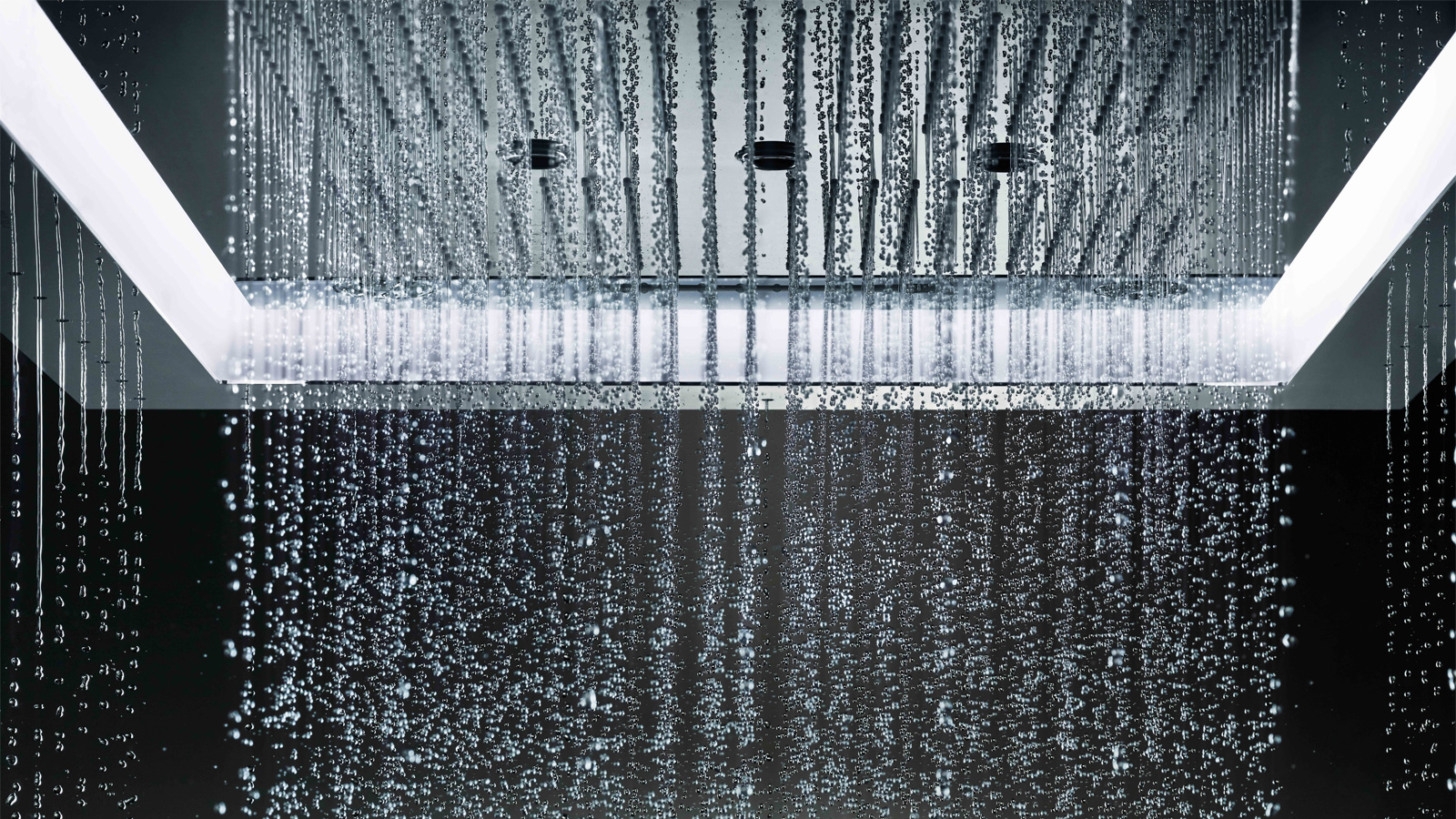
Grohe – With a selection of products that can be controlled via an app, Grohe can offer many digitalised options. This includes the Sensia Arena shower toilet, Aqua symphony shower with light, music and steam functions, and Grohe Sense, which detects leaks and abnormal levels of humidity, allowing users to shut off the water supply remotely
At first, technology may seem at odds with a room designed as an escape from the outside world. After all, it’s somewhere consumers can get closer to nature.
Sponsored Video
But digitalisation is actually driven by the demand for a spa-like retreat.
Training manager at Grohe UK Chris Penney explains: “Digitalisation in the bathroom has brought wellness, personalisation and luxury to the forefront of product design.
“App technology has enabled products to deliver our individual preferences instantly, whether it’s pre-setting our shower to just the temperature and volume we like, playing our favourite music or operating cleansing functions on a shower toilet system.”
Showers lead
In fact, the sellhousefast.uk survey found smart tech of most interest to consumers included taps, showers and built-in speakers.
It’s perhaps unsurprising as these are the most established digital products for the bathroom.
Bluetooth connected speakers featuring in mirrors and mirrored cabinets are nothing new, as managing director of Duravit UK Martin Carroll continues: “Technology in the bathroom is not a new concept.
“Although, its influence has been gradual, such as the demisting technology heating mirrors or the touch panel systems that control the well-being options across Duravit baths.”
The digitalisation of showers was first introduced as far back as 2017, with many models now on the market.
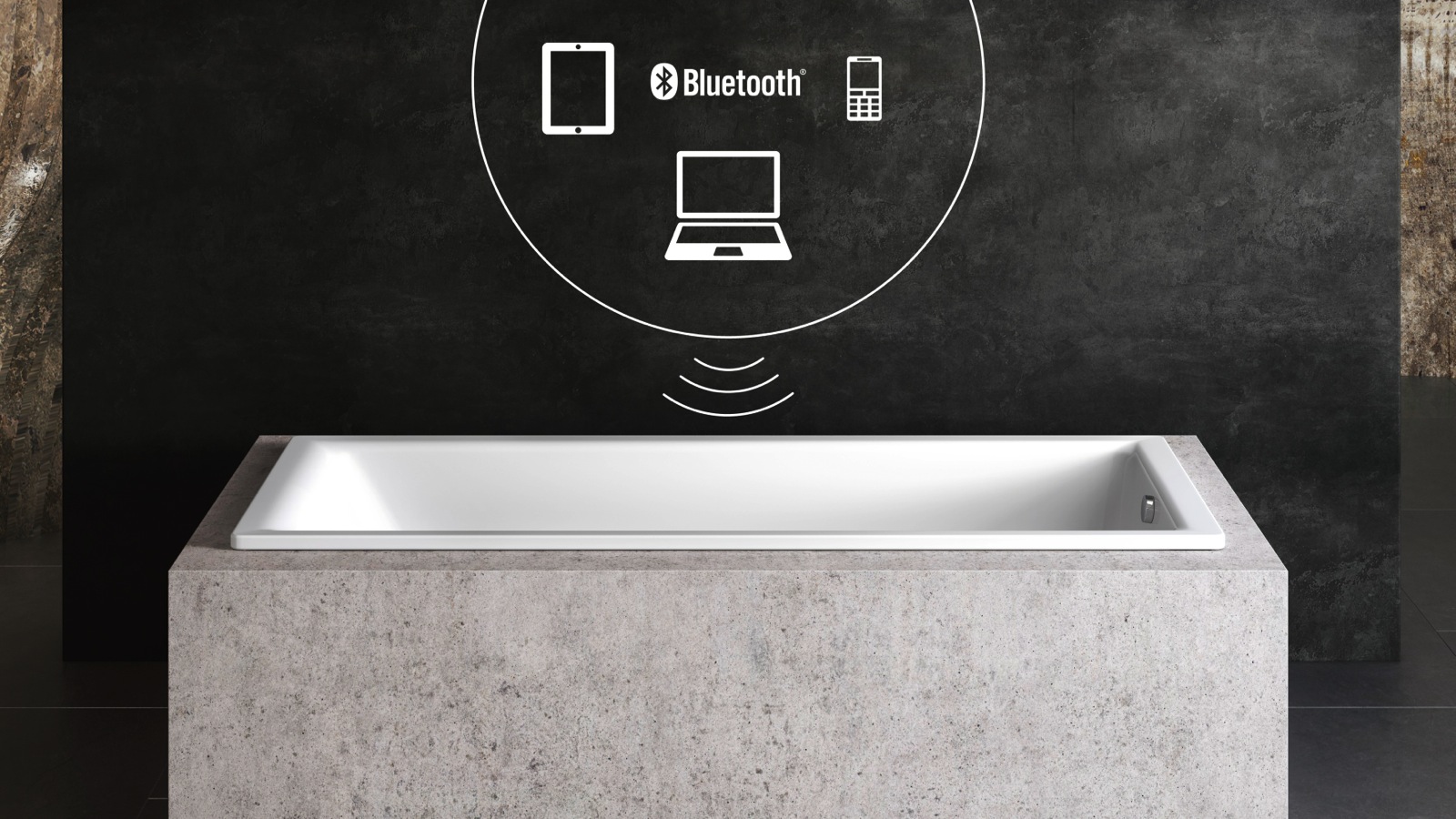
Kaldewei – Sound Wave is an audio system for Kaldewei baths that can wirelessly play music from Bluetooth-enabled devices, such as tablets, smartphones or laptops. The transducer, two acoustic panels and a receiver are all hidden under the bath
Chris Penney agrees the showering sector is the most popular choice of digitalisation in the bathroom: “Showers seem to be taking the lead in terms of both innovation and equally being readily embraced and enjoyed by consumers.”
But the digitalisation of bathrooms hasn’t stopped there, with Wi-Fi-controlled lighting and heating arguably forming part of the wider Smart Home specification, and even App-operated toilets.
Chris Penney of Grohe, however, adds these have a long way to go in residential sales: “Shower toilets are still up-and-coming in the UK.
An understanding of these products and their benefits are not yet known by a mass audience.
“They are, however, growing in commercial, hospitality and care settings and we expect more residential specifications will begin to grow in popularity in the next few years.”
Optimising energy
But is smart bathroom tech just a toy for bathroom retailers and designers to serve consumers with big budgets?
No, exclaim experts. Digitalisation can actually put the consumer in greater control of their bathing environments.
Setting temperatures and flow preferences can reduce energy use, with digitalised products that use water.
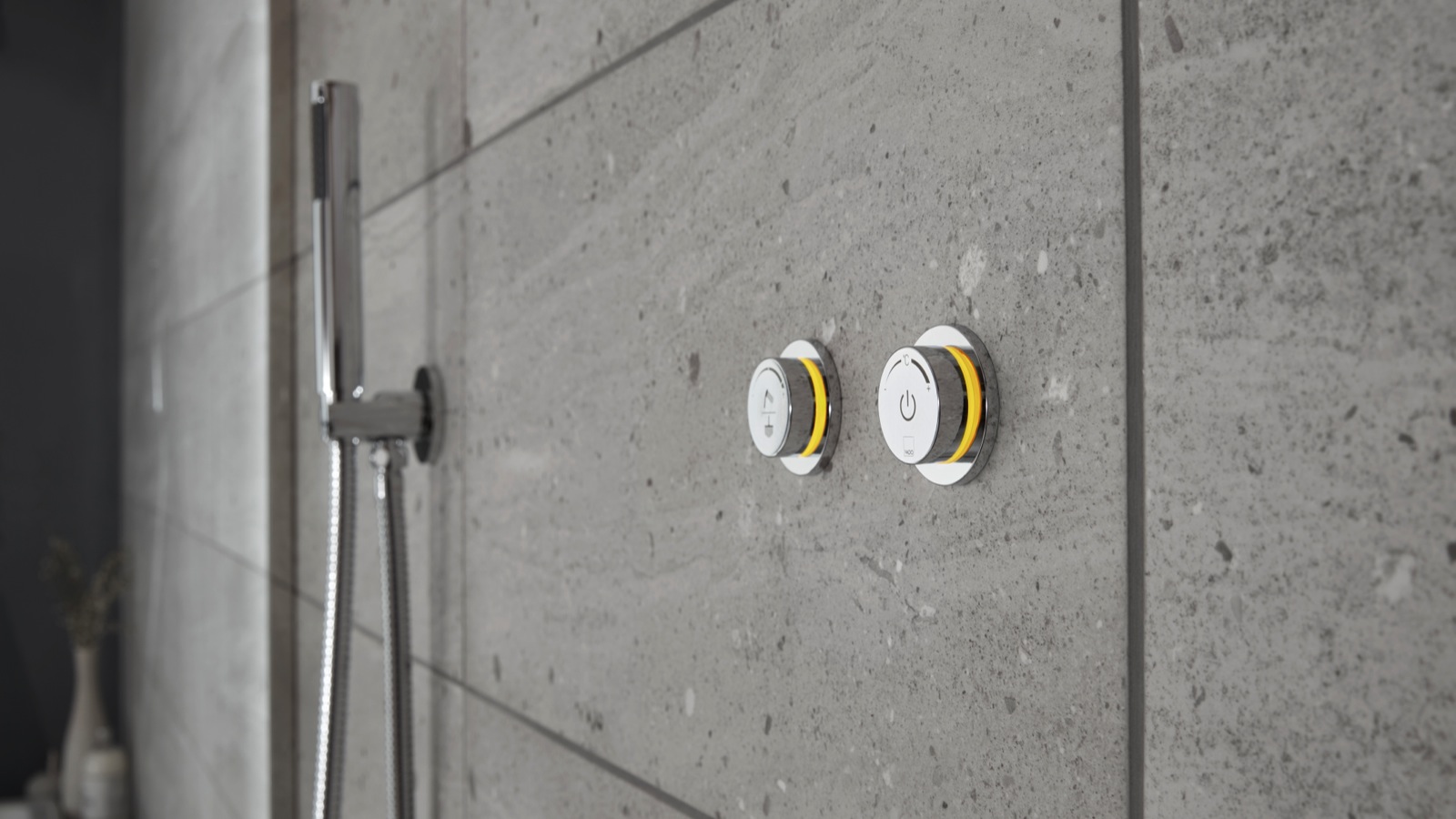
Vado – SmartDial comes in a choice of single and dual outlet for shower and dual outlet for bath/shower valve. It allows users to save their temperature, flow and bath fill preferences. It also comes with a start/stop remote and has a five-year guarantee
In fact, commercial manager of the Pure Bathroom Collection Karen Sperrin says one of the benefits of digital showering is “advanced thermostatic technology, which means we now have more control over the temperature of the shower.”
Furthermore, a digitally-controlled system can adjust the amount of lighting required in a bathroom, recalling ‘moods’, so the entire bathroom doesn’t have to be flooded in light.
And as technical director of Ivory Egg Mark Warburton comments: “There is also the ability to integrate the heating, towel rail, mirror demister and extraction fan into the same system.”
Designed for all
Digital technology helps simplify the operation of the bathroom.
It is particularly true of touch controls, which can be understood and easily used by all ages; therefore, it can help future-proof a home.
This was certainly the view of research director Jane Blakeborough at last year’s Bathroom Manufacturers Conference, as she expressed the ageing population and Silver Pound will drive smart technology sales.
She stated a smart home reacts instinctively to individual requirements and should allow older users to live in their homes in a more intelligent way.

Duravit – DuraSystem in-wall technology features an electronic A2 flush plate for its smart SensoWash WC. Made from white safety glass and surface mounted, the flush plate features an infrared sensor which activates the illumination of the symbols when a user is nearby
And Chris Penney of Grohe agrees: “A digital bathroom will provide more convenience and comfort both now and in future years, when family members might be older and less mobile.
“Digital operation allows each user ownership over their cleaning and hygiene, meaning a sustained independence, even for the elderly or more vulnerable users.”
And let’s not forget digital is a growing expectation for the younger generation who have grown up streaming music and TV and being connected to internet 24/7 through mobiles and tablets.
Product and marketing director of Vado Angela Neve comments: “The sales of digital variants are on the growth curve.
“With millennials coming of an age where they will have their own homes, investment in digital bathroom products will be a necessity rather than a luxury.”
Health and wellness
But will the bathroom ever catch up to the kitchen in terms of digitalisation?
Chris Penney points out the difficulty in comparison as smart technology serves differing purposes in each room.
He comments: “The kitchen is much more functional space in the home whereas the bathroom is more indulgent, private and centred towards relaxation.
“Digitalisation in the kitchen endeavours to make our lives easier and more convenient whereas in the bathroom, the focus is much more on health and wellness.”
Penney says bathroom manufacturers have traditionally been held back on the journey to develop bathroom digitalisation, having to consider how to manage being “always on,” along with the time to escape.
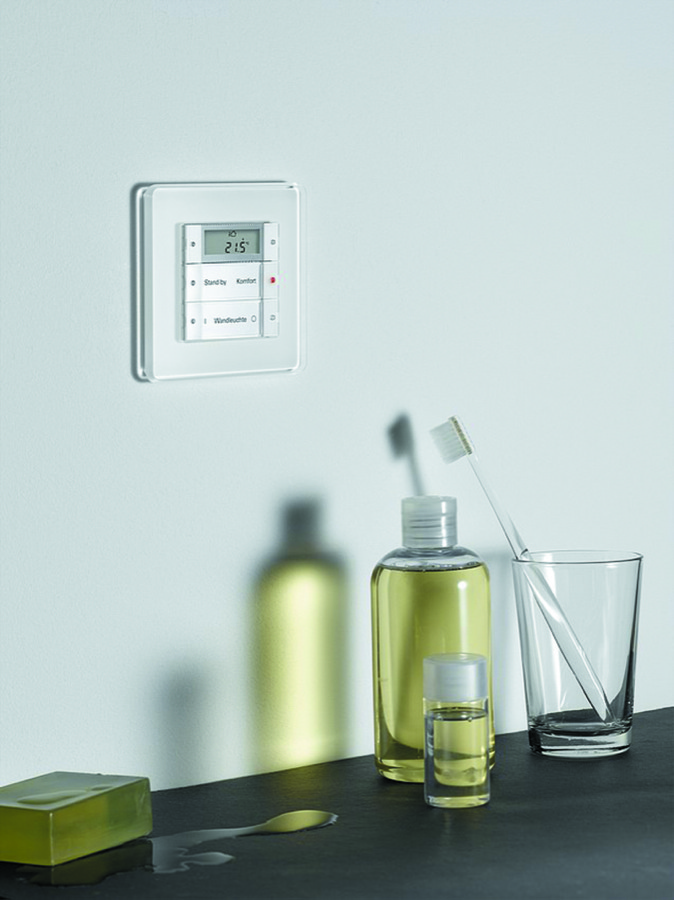
Gira – The Gira Touch Sensor 3 Plus can control building functions, from lighting to blind operation and room temperature all from one unit. Users can switch the light on, dim the light and even recall light ‘moods’.
He continues: “Time in the bathroom is often spent relaxing in the bath or shower and shutting off from the outside world.
“Pressures of digitalisation will have threatened this parity; therefore, it will have taken manufacturers time to strike the balance of finding useful digital features that don’t interfere with the overall bathroom experience.”
Whereas, Angela Neve has taken a more pragmatic point of view, noting: “Being able to develop high quality, intelligent products requires a high degree of electrical and mechanical engineering.
“So internal new product development teams have had to learn about new technologies and manufacturing processes and get up to speed with the digital revolution.”
And she offers words of warning: “Bathroom manufacturers need to be mindful of consumer electronics brands developing solutions for the wet space arena”.
Smart drives sales
Certainly, with the growth of Smart Homes and App-driven technology, digitalisation will only become more significant in the bathroom.
Chris Penney of Grohe UK comments: “The continued growth of Smart Hone technology will undoubtedly inspire more innovation in the digitalisation category.”
And Angela Neve of Vado agrees: “Bathroom products which can be integrated into the Smart Home will undoubtedly grow in popularity, so long as the benefits are meaningful.”
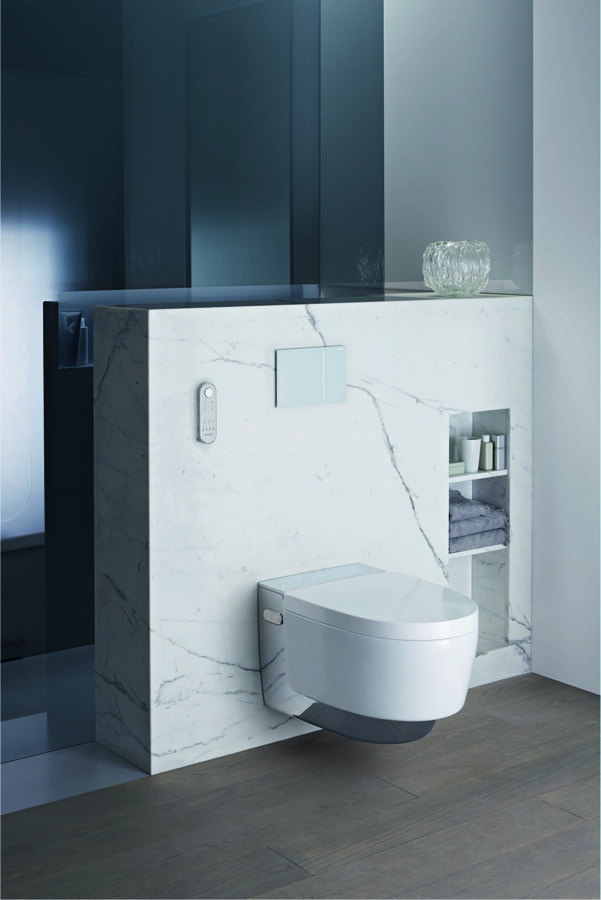
Geberit – The Geberit Aquaclean App is compatible with the Aquaclean Mera shower toilet, allowing the user to alter its settings, such as spray intensity and drying temperature. In addition, the seat temperature can also be adjusted remotely
What seems to be more contentious is where digital will start to take hold. Chris Penney believes the new-build and refurbishment market will drive sales because of the complexities of installation.
He comments: “A lot of bathroom products with digital features that are currently on the market require quite complex installation, which often includes behind-the-wall fixtures.
“This means the retrofit market is not currently the mass market for these types of products; new-builds or large renovation projects will be much more likely to specify these products initially.”
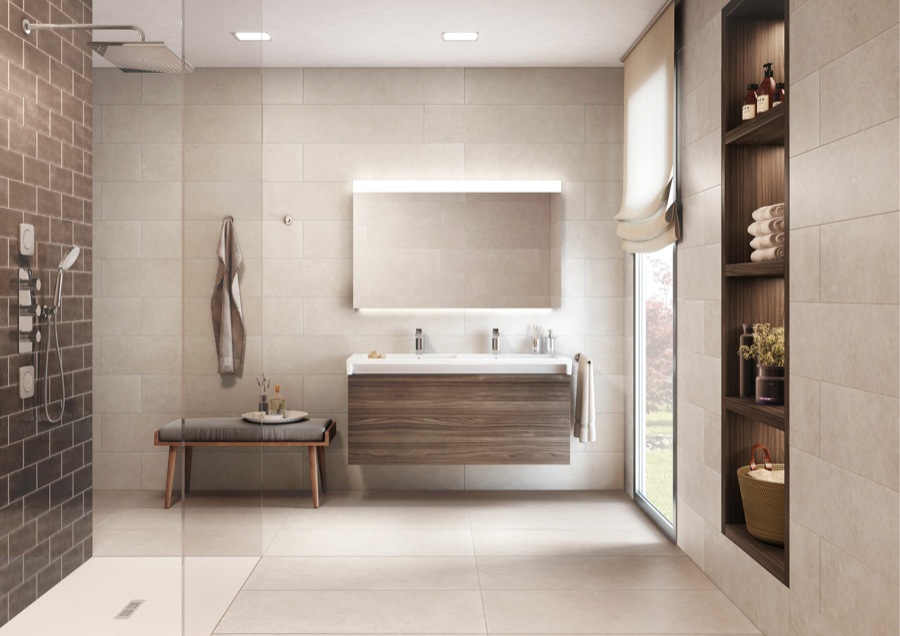
Roca – The Stratum-N Bluetooth connected furniture unit features speakers hidden under the drawers. The unit also benefits from internal LED lighting, which can be activated at the touch of a button
Whereas, Angela Neve believes the personalisation of digitalisation will see the refurbishment market driving the new-build housing sector.
She comments: “Individual refurbishments and maintenance projects will see the greatest use of digitalised products within the next 12-18 months.
“High-end new-builds may quickly follow as they seek to delight potential buyers with new innovations.
“But currently, specifications are still very much focused on differentiating through colour and material finish.”
Certainly, accomplished bathroom retailers and designers should ensure they stay on top of technology trends.
Angela Neve concludes: “The future of digitalisation in the bathroom is an interesting and exciting subject, as it will be a step change in the way in which we use the bathroom space and interact with the products/brands in it.”



